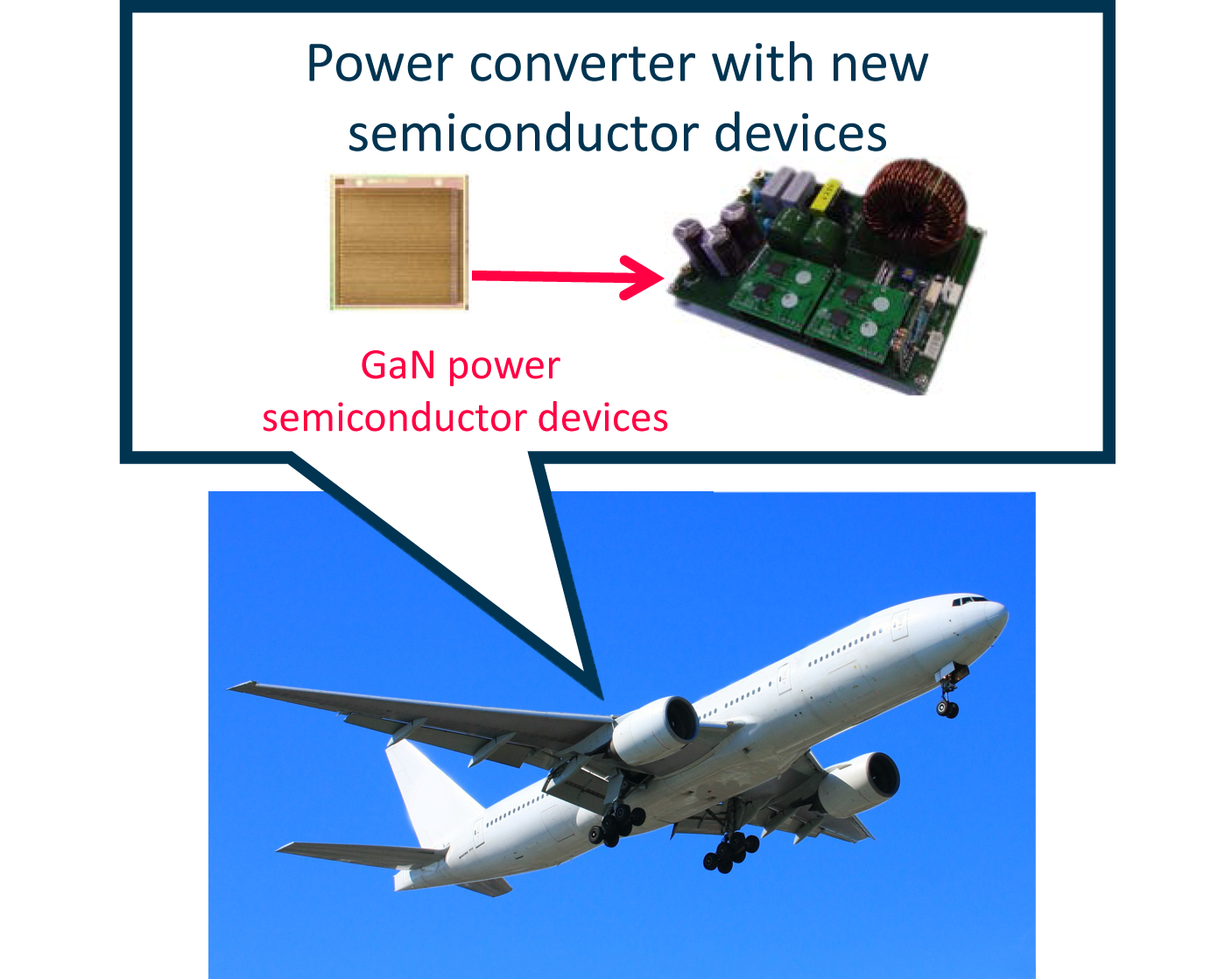Key word
Here, we introduce basic 4 key words of our researches.- PowerConversion:Converting electric energy into different form, AC or DC, voltage or frequency. This is necessary for electric mobilities and devices.
- DC-DC Converter: A circuit that converts DC voltage.
- AC-DCConverter:A circuit that converts AC to DC
- Inverter: A circuit that converts DC to AC or high frequency energy
Power conversion with GaN semiconductor devices

GaN (Gallium Nitride) power devices and SiC (Silicon Carbide) power devices are attracting attention as the following generation devices. Our laboratory successfully reproduce the mechanism of GaN FET switching in a circuit simulator.
Power converter structure and passive elements are designed optimally to take full advantage of GaN power devices. We have built:- A converter with the world highest level power density
- An Inverter with 99% efficiency in all output range
- A converter operated in 13.56 MHz
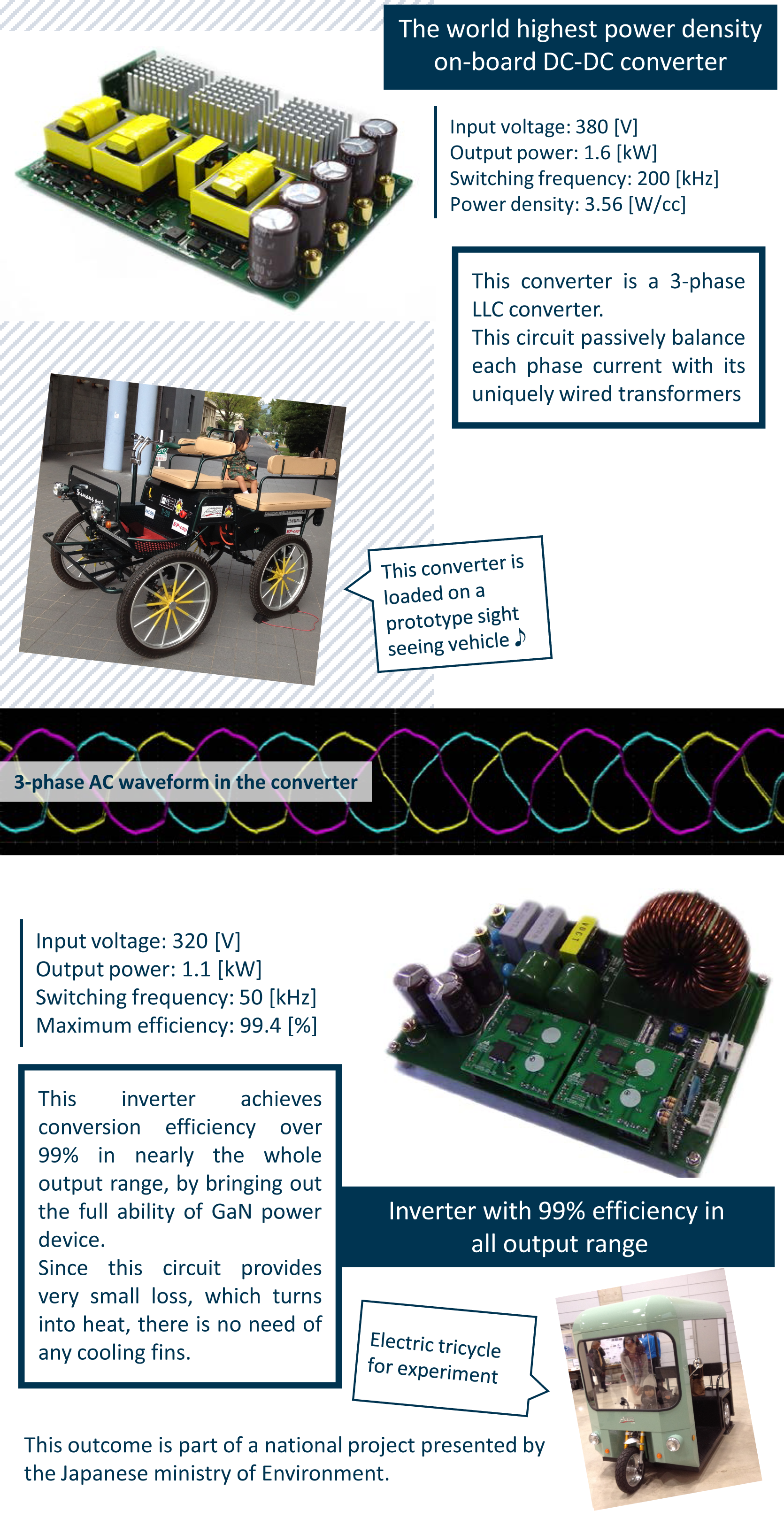
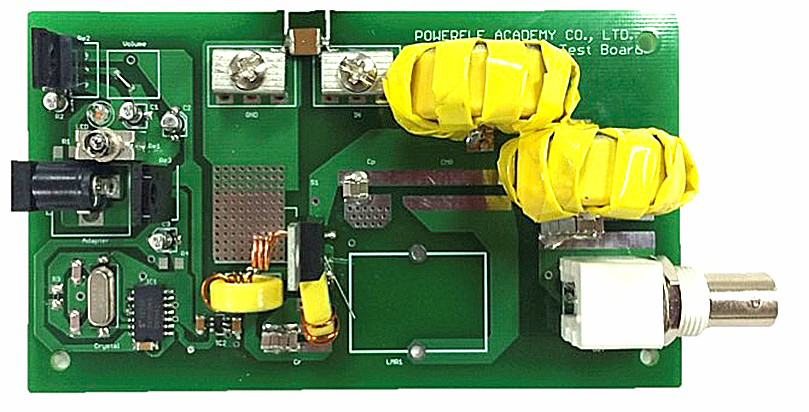
Φ2 class inverter operated in 13.56MHz
- Input voltage: 75 [V]
- Outputpower:200 [W]
- Switching frequency: 13.56 [MHz]
Conventional semiconductor devices such as Silicon power devices and vertical SiC power devices hardly achieve the operation in very high frequency like 13.56MHz. This inverter fully utilizes high frequency characteristics of GaN power semiconductor devices and achieves switching operation in 13.56MHz. The gate driver contains its original technologies and it is differentiated from other inverters at the point of availability to the load fluctuation.
Power conversion with SiC semiconductor devices
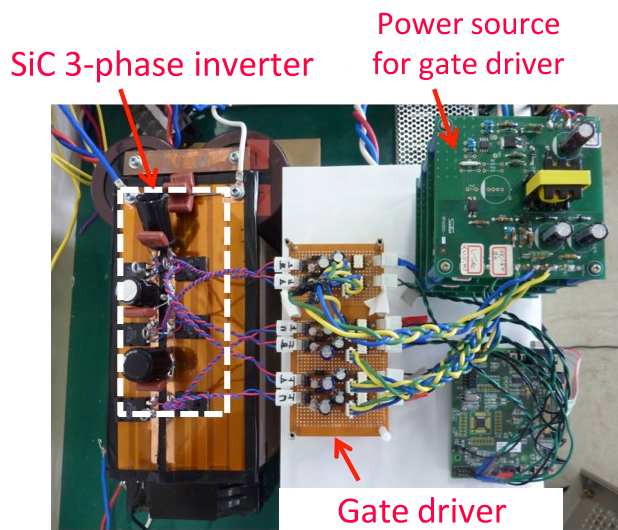
We also conduct researches on SiC power semiconductor device applications. The full SiC inverter created in our lab achieves higher efficiency than that of existing IGBT inverters. An experimental unit has successfully driven a 2.2kW inductive motor.
In our laboratory, comprehensive research topics are picked up from both microscopic perspective and macroscopic perspective, such as:
- A module technology to drive full SiC invereter stably.
- Energy saving effect of highly efficient conversion on a hybrid vehicle system.

Power Module Design and Packaging
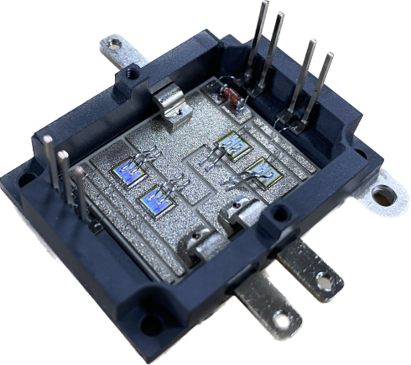
Power Module Design for CM Noise Attenuation
- Power rating: 15 [kW]
- Voltage-current rating: 400 [V]-50 [A]
- Two SiC MOSFET in parallel
A specific area of bottom copper of DBC is etched to reduce CM capacitance without compromising the size of the power module, top copper pattern, thermal performance, and mechanical reliability. The proposed power module design is not limited to power modules with higher power, numerous switching devices or double-sided cooling.
Thermal and thermo-mechanical performance verification with FEM simulations

Reliability Testing (Thermal Cycling Test, SAT image validation)
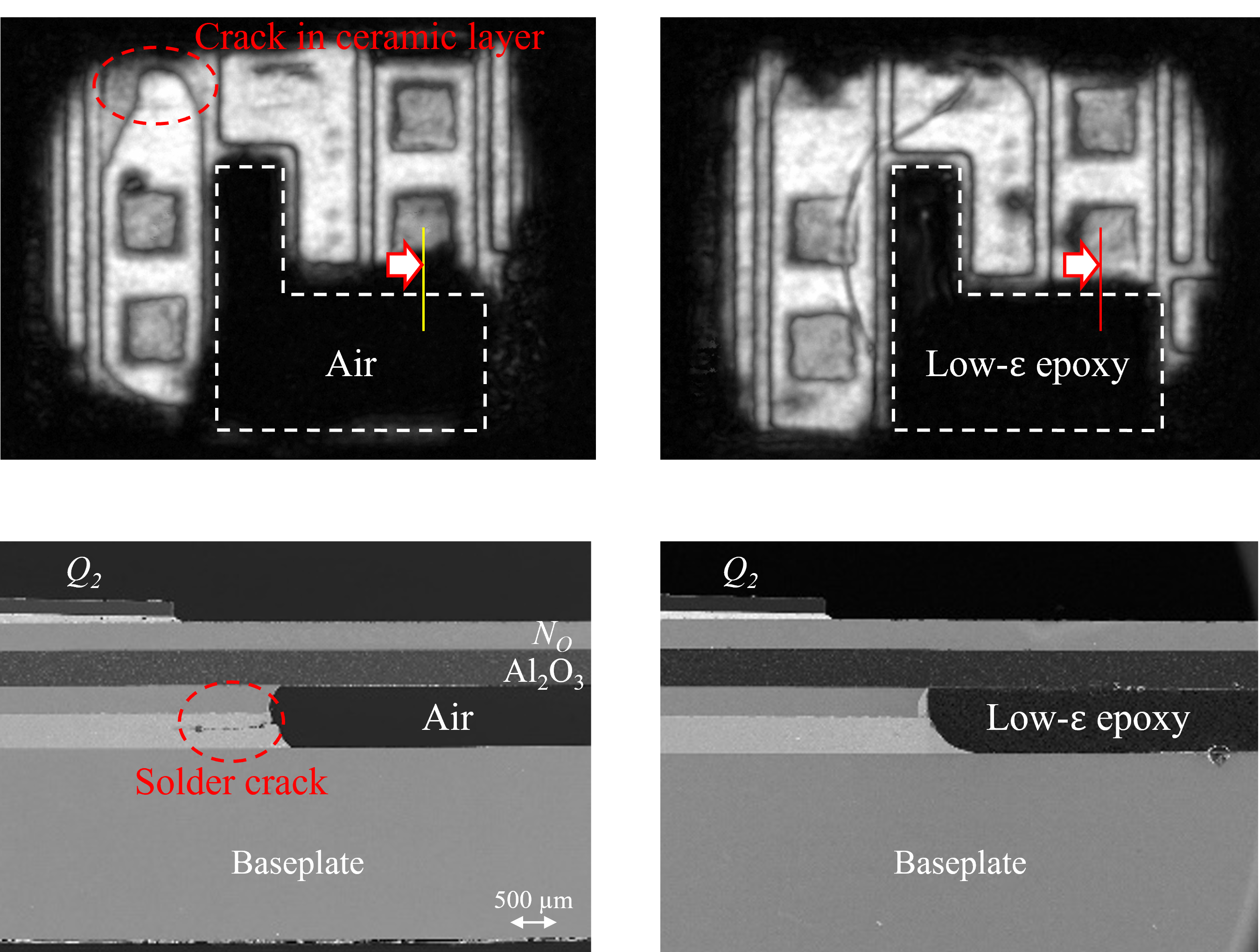
Wireless power transfer
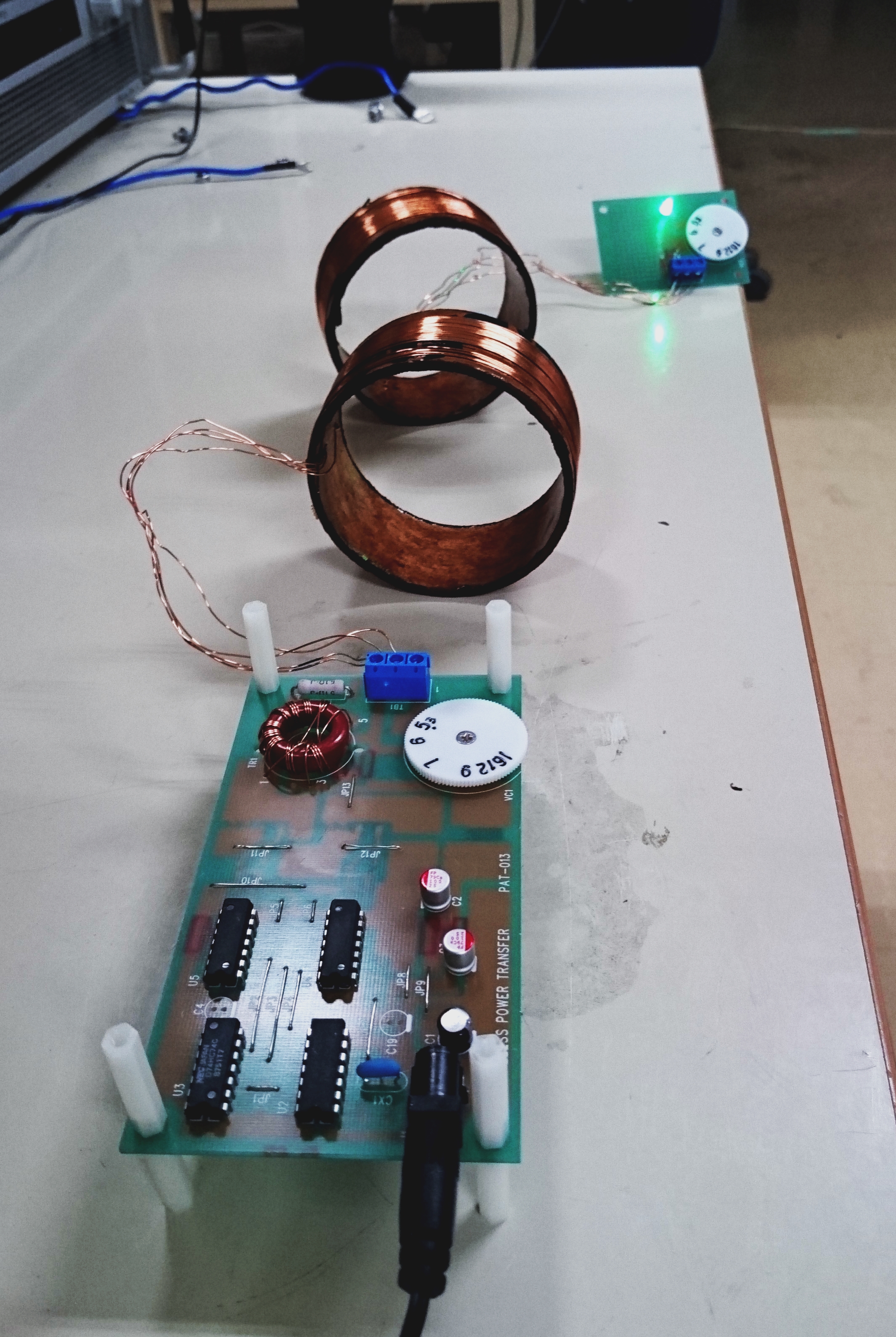

Wireless power transfer technology was first put into use for mobile device chargers. Application of electric vehicle charger is now studied around the world.
In our laboratory, on-board wireless charger technologies for automobiles, vessels and aircrafts are studied. A basic study on a new wireless power transfer method is conducted.
Following generation magnetic components
A power electronics circuit needs magnetic components such as transformers or inductors. We propose new magnetic core structure or winding structure and study methods to accomplish higher and higher energy density.
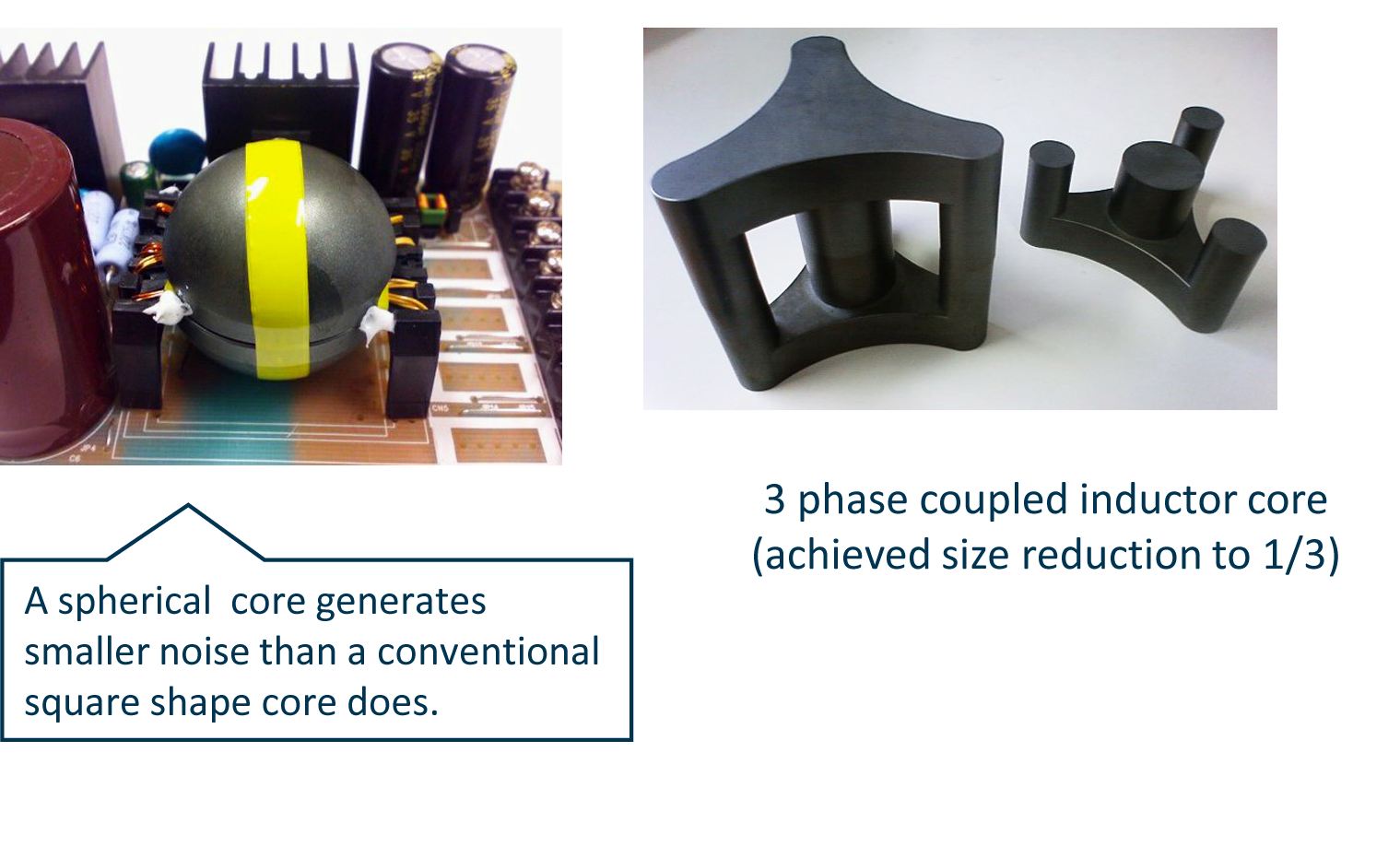
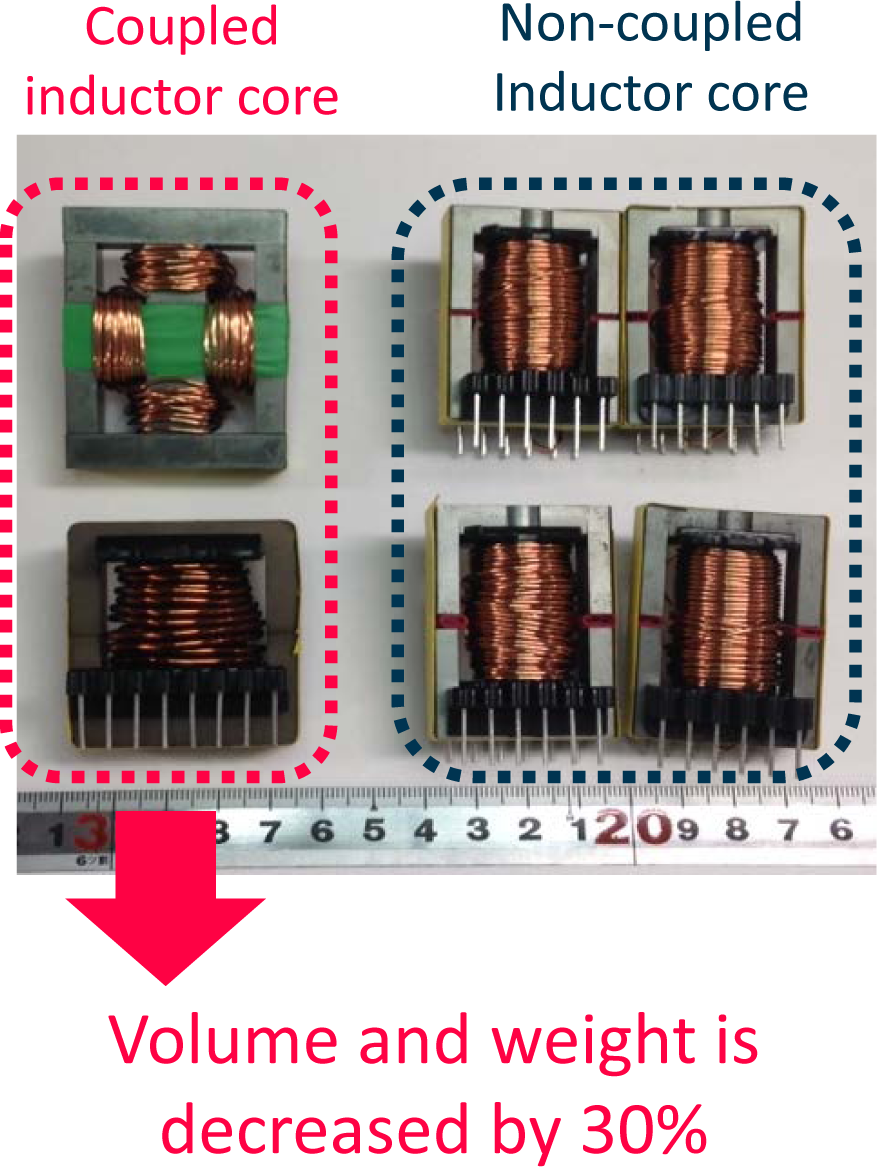
Noise reduction of converter circuit
Fast switching devices such as GaN-FETs and SiCMOSFETs enable downsizing and weight reduction by its highly efficient operation at very high frequency. On the other hand, a power converter circuit is required to provide electromagnetic compatibility (EMC). Several international standards have been set to control electromagnetic interference. To meet those standards is one of the difficulties in industrial application of converter circuits operated in very high frequency. So, we study noise reduction methods to properly utilize those fast switching devices.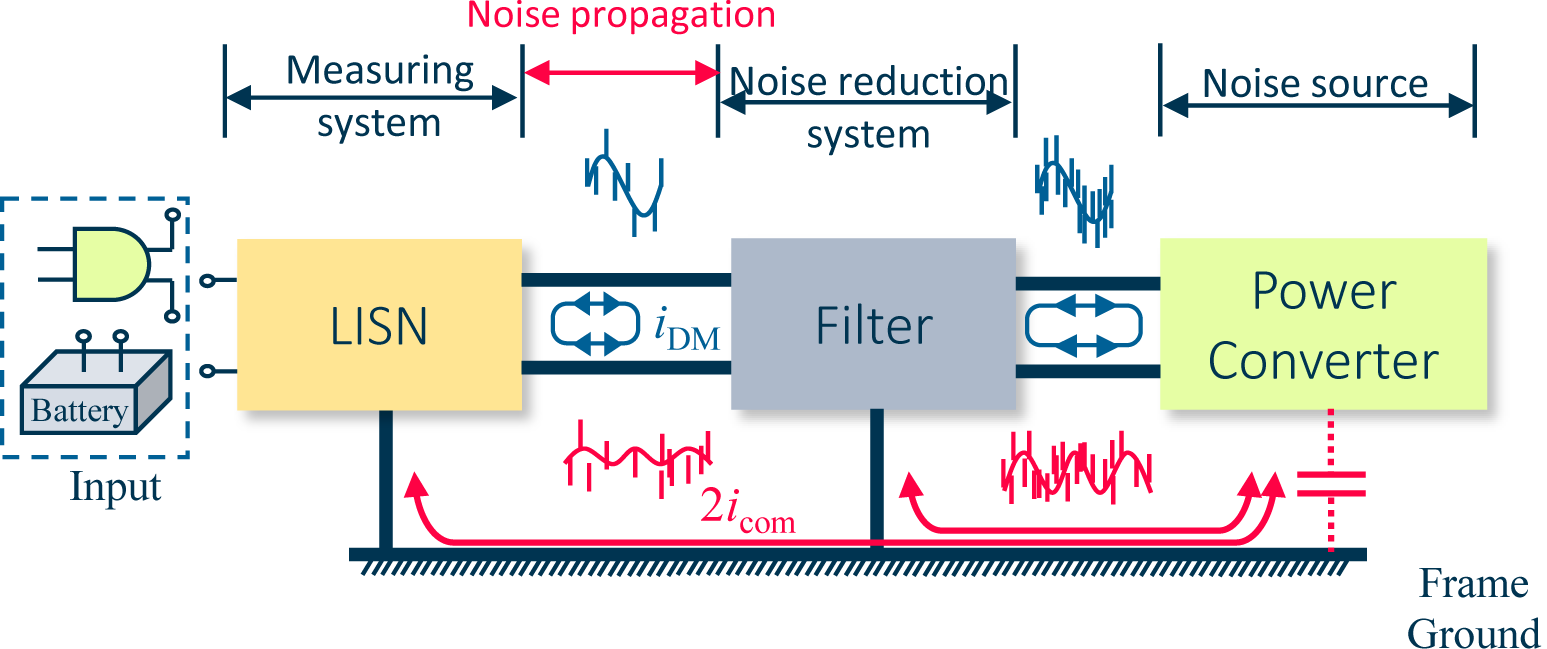
Photovoltaic power generation control
In photovoltaic power generation, an output voltage changes frequently depending on the weather. Therefore, a power conditioner circuit is necessary to supply energy in stable voltage. We use the following generation devices and integrated magnetic components to achieve a high efficiency and small power conditioner.Paper converter
To bring out a maximum potential of GaNpower semiconductor device, we built φ2 inverter operated in 27.12 MHz.This hundred times higher operating frequency than that of conventional inverter enables a very thin, paper-like converters. We named this converter structure with excellent heat dissipation “Paper converter” and we are trying to expand its application.
Challenge to electrical aircrafts and the “Flying automobile”
Electrical aircraft is attracting attentions in the environmental point of view. Due to increasing needs of new mobilities and improvement in auto-driving technology, “flying automobile” is getting more and more sense of reality. For these aircrafts, high power motor driver circuit plays a significant roll. We study optimization of converters and inverters and motor control suitable for those applications.